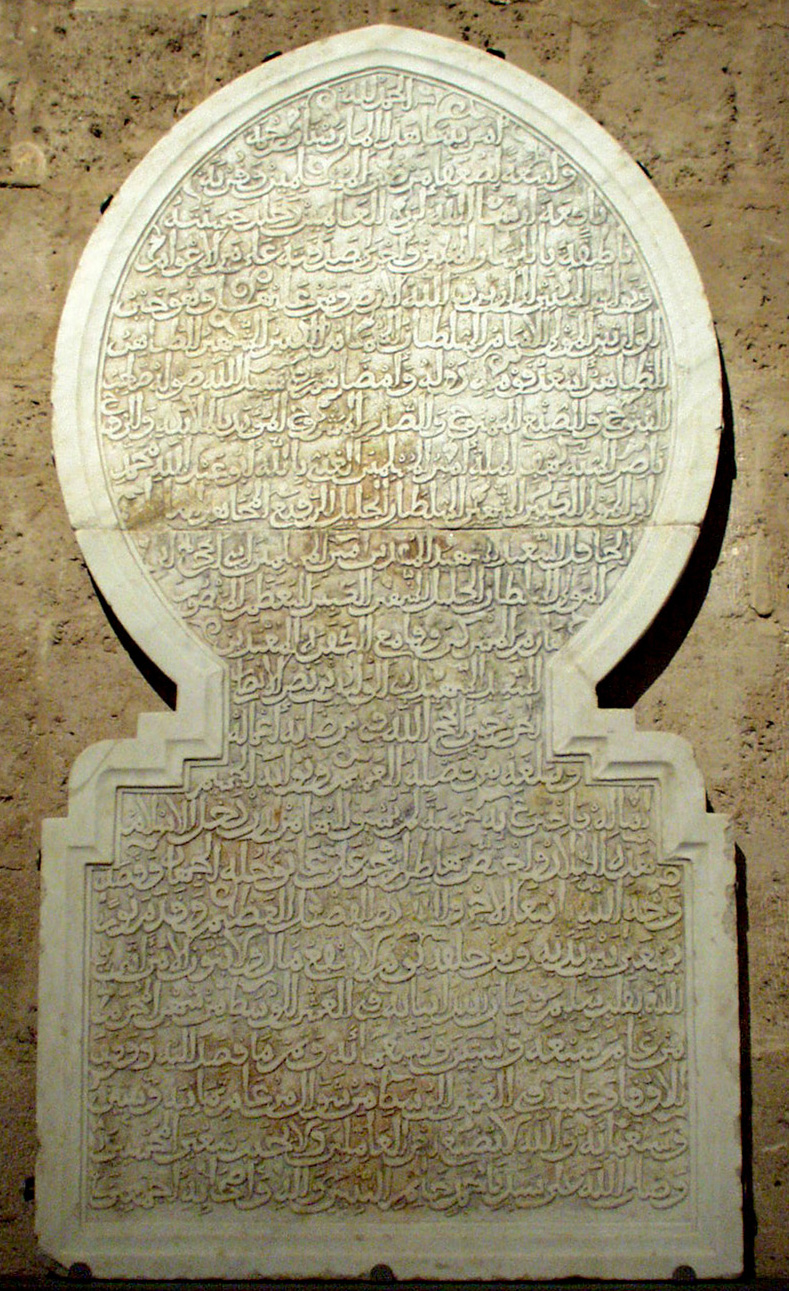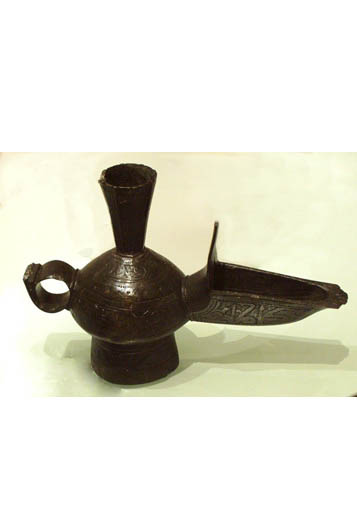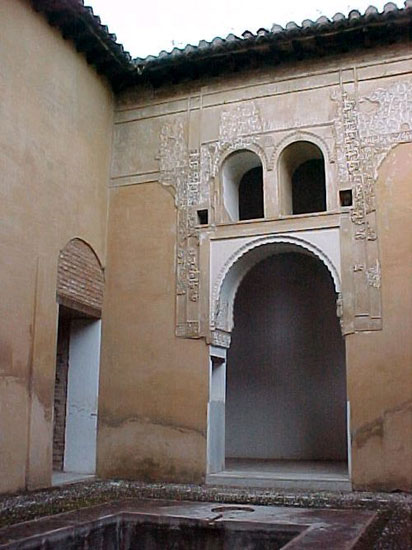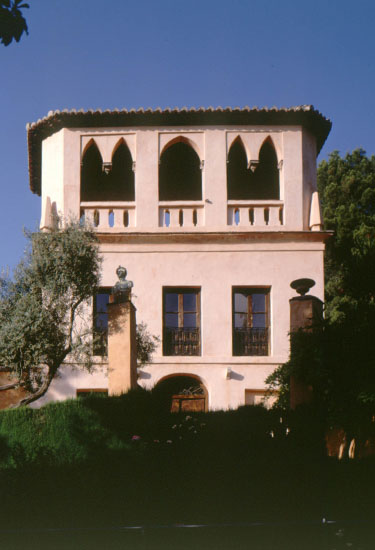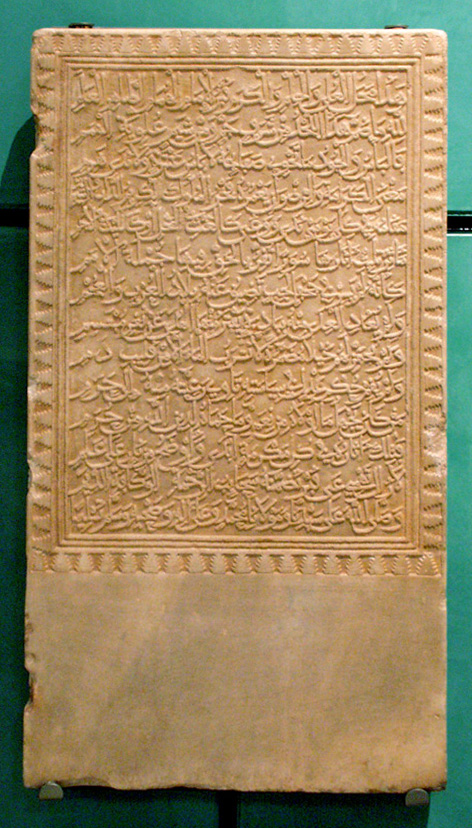Panel of the wall-tiles from the Mexuar
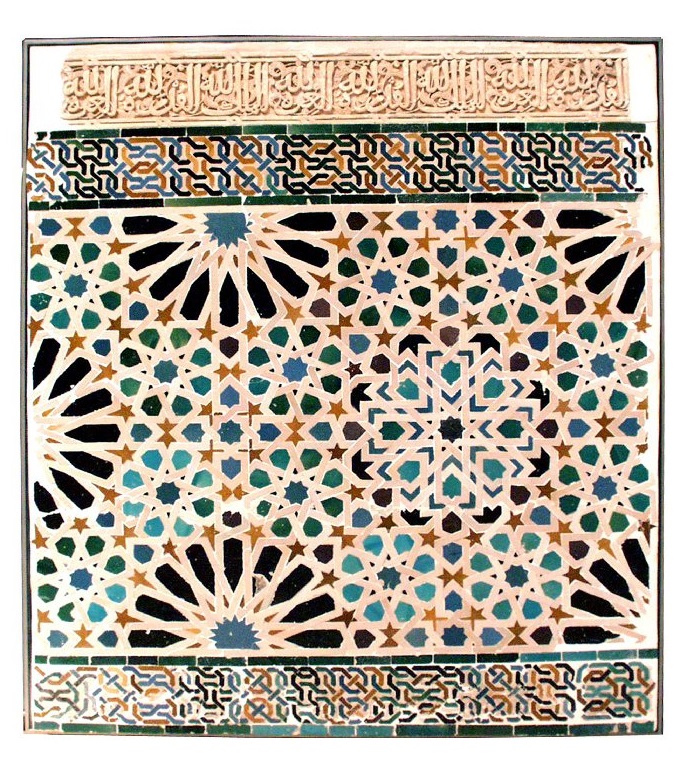
According to Ibn al-Khatib, Muhammad V inaugurated his new Mexuar on the feast day of Mawlid (the birth of the Prophet) in 1362. This was the first great work of architecture he had commissioned after his recent return to the throne. Today the only surviving part of the Mexuar, which was originally used for administrative and diplomatic business and structured around two courtyards, is the qubba or throne room (itself substantially transformed). This space suffered drastic changes during the Christian occupation of the Alhambra, when the roof lantern was removed to build rooms on its upper floor and the ground floor was extended towards the north, giving the room a rectangular structure that met the new needs of the space as a place of worship.
When the Mexuar was converted into a Christian chapel, its decorative tile panels were renovated by morisco craftsmen. This is what happened to the tile panel on display in the Museum of the Alhambra, which from the 16th Century was part of the wall-tiling in the Mexuar until it was removed in 1947 in order to reopen the original passage connecting the Mexuar with the Courtyard of the Cuarto Dorado.
The analysis of this tile-panel provides an insight into the techniques used by Nasrid and morisco craftsmen in the colouring, glazing and cutting of the tiles, while at the same time immersing us in the attractive world of Islamic decoration, in which latticework played a leading role.
Opening Times: Saturdays at 12h.
Place: Room VII, Museum of the Alhambra, Palace of Charles V.





 Contact
Contact






